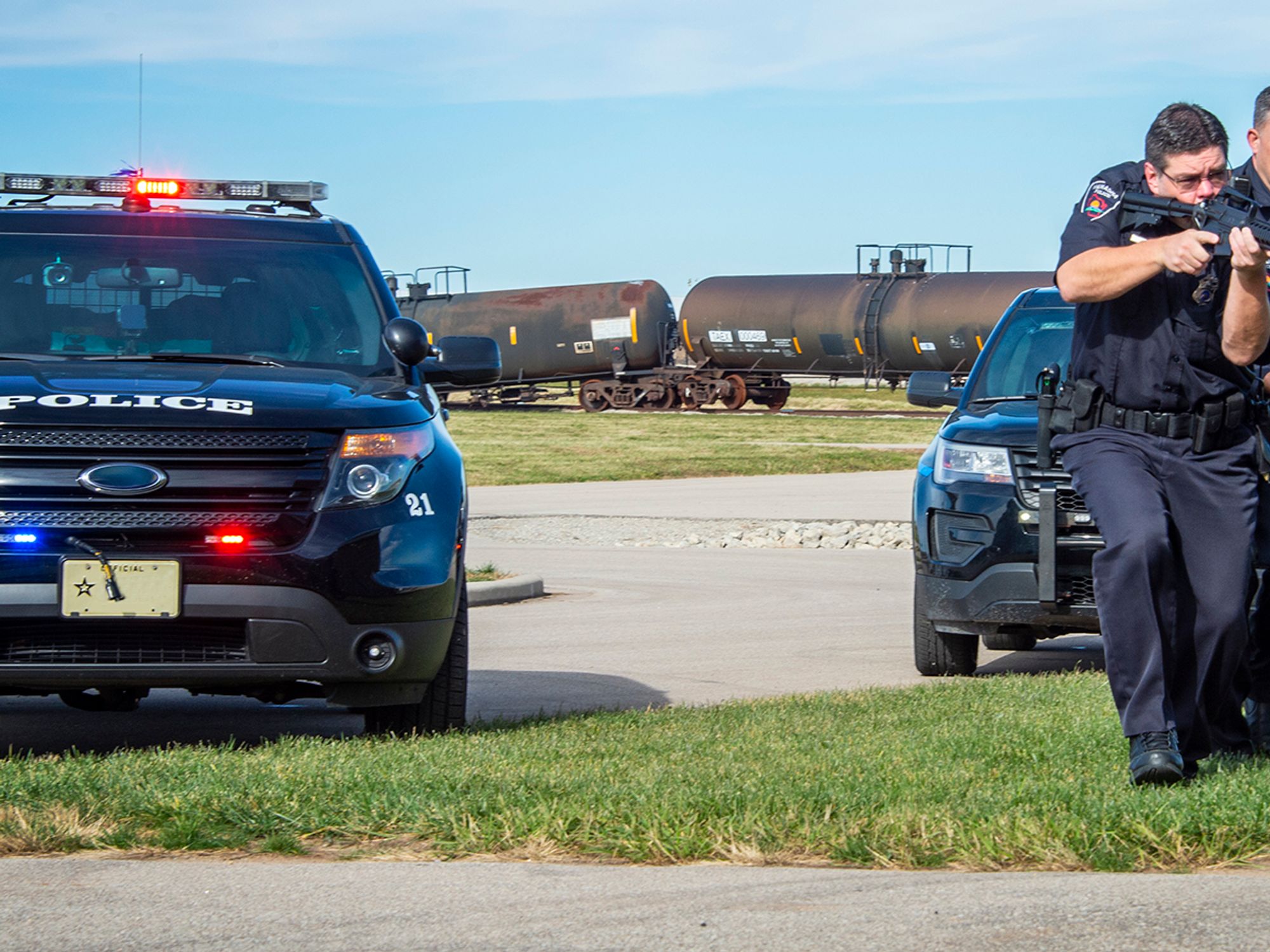After police arrive at the scene

- Stay clear of police officers and calmly exit the premises when possible, but remain at the scene to help provide information to the police.
- If remaining behind, help save lives with first aid and bleeding control practices.
- When speaking with law enforcement officers, avoid embellishments, opinions, or hearsay.
When police arrive at the scene, their primary roles are to:
- Stop the shooter from killing people,
- Stop wounded or injured people from dying, and
- Evacuate the building.
Officers may enter the building with little to no information on the number of shooters or their locations. Keep in mind the police are actively looking for the threat. If confronted by police, follow their verbal commands, keep hands up and visible, spread fingers to indicate the absence of a weapon, and avoid any sudden movements.
Be sure to stay out of the officers’ way when moving toward exits. Do not try to grab onto the officers or attempt to hide behind them. Do not point, yell, or scream at them. Try to remain calm and exit quickly.
Remember that upon entering the scene, officers will not stop to help injured persons. They must secure the area (stop the threat) so emergency medical personnel can enter the building and offer aid to those who need it. Help save lives by learning first aid and bleeding control basics. Uncontrolled bleeding can result in death in as little as 5 to 10 minutes. It is the #1 cause of preventable death from trauma.
After the incident
After the threat has been stopped and the area secured, law enforcement will let people know it’s safe. Do not leave the scene. Police officers will want to talk to everyone involved at that time or as soon as possible after the event occurs.
When speaking with law enforcement officers, always tell the truth. Stick only to known facts and avoid embellishments, opinions, or hearsay. Tell officers specifically what was seen, heard, and experienced.
Do not talk to reporters or post details about the situation on social media. Direct all media inquiries to a corporate communications director or designated company representative.
For many, surviving an active shooting incident will be the most traumatic event of their life. Seek counseling through programs available at work or in the community.
